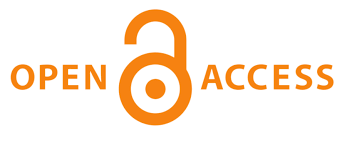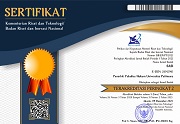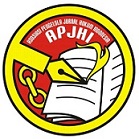PERTARUNGAN KONSTITUSIONAL PADA PEMILU 2014 DAN KONSOLIDASI HAK-HAK PEMILIH DI INDONESIA
 )
)
(1) Fakultas Hukum Universitas Pattimura, Indonesia
 Corresponding Author
Corresponding Author
Abstract
Election is an important pillar of the concept of rule of law and the concept of democracy. Election is a constitutional fight for their regime's power. The shift mechanism is expected by the constitution serves as a form of accountability and control. Election is a strategic moment in which the right of voters not only show concern, but also determine the path direction of the country the next 5 years in a political system based on the law. The important role played by the voters will be consolidated agenda of change to be achieved in the life of the country.
Keywords
DOI
10.47268/sasi.v21i2.188
Published
2015-12-20
How To Cite
@article{SASI188,
author = {Jacoba Sahalessy},
title = {PERTARUNGAN KONSTITUSIONAL PADA PEMILU 2014 DAN KONSOLIDASI HAK-HAK PEMILIH DI INDONESIA},
journal = {SASI},
volume = {21},
number = {2},
year = {2015},
keywords = {Election; Constitution; Consolidation; community participation},
abstract = {Election is an important pillar of the concept of rule of law and the concept of democracy. Election is a constitutional fight for their regime's power. The shift mechanism is expected by the constitution serves as a form of accountability and control. Election is a strategic moment in which the right of voters not only show concern, but also determine the path direction of the country the next 5 years in a political system based on the law. The important role played by the voters will be consolidated agenda of change to be achieved in the life of the country.},
issn = {2614-2961}, pages = {48--56} doi = {10.47268/sasi.v21i2.188},
url = {https://fhukum.unpatti.ac.id/jurnal/sasi/article/view/188}
}
Alford, Robert R. and Roger Frienland, 1990.m Powers OfTheory :
Capitalism, The State and Democracy, CambridgeUniversity Press.
Alexy, Robert, 2005. A Theory Of Constitusional Rights,NewYork: Oxford University Press Inc.
Asshiddiqie, Jimly, 2005. Hukum Tata Negara dan Pilar Pilar Demokrasi, Jakarta: Konpress.
Blaugh, Ricardo and Jhon Schwarzmantel, 1988. Democracy : AReader, Edinburgh University Press.
Couwenberg, S.W., 1977. Westers Staatrecht Als Emancipatie Proces, Samsom Uitgeverij Alphen aan den Rijn.
Dicey, A.V, 1952. Introduction to The Study of The Law of the Constitution. Mac Milan and Co. Limited.Dyzenhaus, David, Legality and Legitimacy, New York: Oxford University Press Inc.
Hans Dieler Klingemann dan Richard I. Hofferbert, 2000. Partai, Kebijakan dan Demokrasi, Yogyakarta: Jentera.
Jhon Ferejhon, Jack N. Rakove, 2001. Constitusional Culture and
Democratic Rule, Cambridge University Press.
Nurtjahyo, Hendra, 2005. Filsafat Demokrasi, Jakarta: PusatStudi
Hukum Tata Negara Fakultas Hukum Universitas Indonesia.
Kusnardi, Mohammad dan Hermaily, Ibrahim. 1998. Pengantar Hukum Tata Negara Indonesia Fakultas Hukum Universitas Indonesia. Jakarta : Pusat Studi Hukum Tata Negara FH-UI.
Mashudi, 1993. Pengertian-Pengertian Mendasar Tentang Kedudukan Hukum Pemilu di Indonesia Menurut UUD1945. Bandung : Mandar Maju.
Mahfud MD, Moh., 1993. Demokrasi dan Konstitusi Di Indonesia, Jakarta: Penerbit Rineka Cipta.
Notosusanto dan Soeseno, 2003. Buku Panduan untuk Pelatihan
Pemantauan Pemilu 2004. Jakarta : Centre for Electoral 46.
| Dublin Core | PKP Metadata Items | Metadata for this Document | |
| 1. | Title | Title of document | PERTARUNGAN KONSTITUSIONAL PADA PEMILU 2014 DAN KONSOLIDASI HAK-HAK PEMILIH DI INDONESIA |
| 2. | Creator | Author's name, affiliation, country | Jacoba Sahalessy; Fakultas Hukum Universitas Pattimura; Indonesia |
| 3. | Subject | Discipline(s) | |
| 3. | Subject | Keyword(s) | Election; Constitution; Consolidation; community participation |
| 4. | Description | Abstract | Election is an important pillar of the concept of rule of law and the concept of democracy. Election is a constitutional fight for their regime's power. The shift mechanism is expected by the constitution serves as a form of accountability and control. Election is a strategic moment in which the right of voters not only show concern, but also determine the path direction of the country the next 5 years in a political system based on the law. The important role played by the voters will be consolidated agenda of change to be achieved in the life of the country. |
| 5. | Publisher | Organizing agency, location | Faculty of Law, Universitas Pattimura |
| 6. | Contributor | Sponsor(s) | |
| 7. | Date | (YYYY-MM-DD) | 2015-12-20 |
| 8. | Type | Status & genre | Peer-reviewed Article |
| 8. | Type | Type | |
| 9. | Format | File format | PDF (Bahasa Indonesia) |
| 10. | Identifier | Uniform Resource Identifier | https://fhukum.unpatti.ac.id/jurnal/sasi/article/view/188 |
| 10. | Identifier | Digital Object Identifier | 10.47268/sasi.v21i2.188 |
| 11. | Source | Title; vol., no. (year) | SASI; Vol 21, No 2 (2015): Volume 21 Nomor 2, Juli - Desember 2015 |
| 12. | Language | English=en | id |
| 13. | Relation | Supp. Files | |
| 14. | Coverage | Geo-spatial location, chronological period, research sample (gender, age, etc.) | |
| 15. | Rights | Copyright and permissions | Copyright: Authors who publish their manuscripts in this Journal agree to the following conditions: 1. The copyright in each article belongs to the author, as well as the right to patent. 2. Authors can enter into separate, additional contractual arrangements for the non-exclusive distribution of the journal's published version of the work (e.g., post it to an institutional repository or publish it in a book), with an acknowledgment of its initial publication in this journal. 3. Authors are permitted and encouraged to post their work online (e.g., in institutional repositories or on their website) before and during the submission process, as it can lead to productive exchanges, as well as earlier and greater citation of published work. 4. Authors have the right to self-archiving of the article (Author Self-Archiving Policy)
License: The SASI Journal is disseminated based on the Creative Commons Attribution-NonCommercial 4.0 International license terms. This license allows anyone to copy and redistribute this material in any form or format, compose, modify, and make derivatives of this material for any purpose. You cannot use this material for commercial purposes. You must specify an appropriate name, include a link to the license, and certify that any changes have been made. You can do this in a way that is appropriate but does not imply that the licensor supports you or your use.
|
Copyright (c) 2019 Jacoba Sahalessy

This work is licensed under a Creative Commons Attribution-NonCommercial 4.0 International License.

 : 1211 times
: 1211 times Download : 592 times
Download : 592 times
















